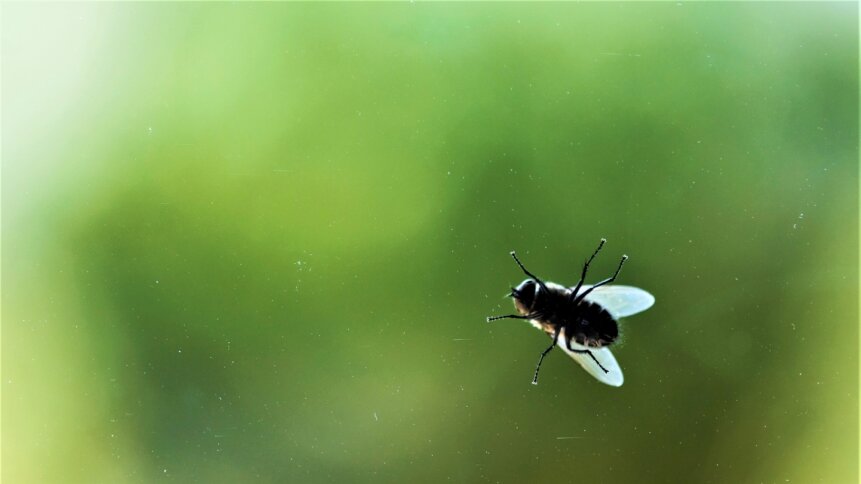How can insects prevent autonomous vehicles from crashing?

|
Getting your Trinity Audio player ready...
|
Despite continuous improvements in road safety, there’s always more that can be done to stop cars and other vehicles from colliding with each other. And the problem gets worse at night. Reportedly, half of all fatal car accidents occur once the sun has gone down, even though there can be 75% less vehicle traffic on the roads after dark. Edge cases are a thorny issue for autonomous vehicles, and explain why driverless cars are still considered by some to be a science fiction daydream. Training self-driving cars in virtual worlds and building digital twins can help. There are other lessons to be found too, in some unexpected places. It’s possible that nocturnal flying insects might have some clues on how to prevent autonomous vehicles from crashing.
Driverless cars and more
Insect-based collision avoidance technology could benefit flying drones and robots too, according to researchers based at Penn State University in the US. Their proposal has been published in the journal ACS Nano. And a non-peer-reviewed version is available as a publicly accessible preprint. What’s more, according to developers, the collision avoidance detector has a footprint of just a few microns (a few thousandths of a millimetre) square. And it consumes hardly any power – just a few hundred picojoules.
“Currently, most collision detection techniques employed by car manufacturers involve the use of various sensors including light detection and ranging (LiDAR), radio detection and ranging (Radar), ultrasonics, and cameras to detect signals from the obstacles, followed by processing of the acquired information using extensive hardware onboard or cloud servers available through internet or satellite links,” writes the Penn State team, led by Saptarshi Das. “Needless to say, these approaches incur excessive infrastructure costs and add tremendous energy burden.”
The group’s low-power design, which could potentially help prevent autonomous vehicles from crashing, is based on atomically thin and light-sensitive memtransistors (transistors with attractive memory properties). And its operation mimics the escape response of the so-called lobula giant movement detector (LGMD) neuron found in many insect species, such as locusts and flies. As the researchers point out, insects can outmanoeuvre predators, catch prey, and impress mates – all while flying in the dark. But how?
Fight or flight signals
It turns out that the LGMD neuron is unique in its ability to perform non-linear computation. And having a single, task-specific neuron in each of the insect’s eyes, which ‘spike’ and fire electrical impulses when obstacles approach, stops the host from crashing into things. “These spike-based computations and information processing techniques of sensory neurobiology allows [insects] to perform fast complex tasks with remarkable energy efficiencies,” comment the researchers in their work. “In contrast, artificial collision detectors use continuous-time electrical signals, which increases the energy burden.”
Implementing the neuron response in silicon-based electronics, the group has shown how optically sensitive components can be configured as a ‘spiking’ night-time collision detection circuit that’s highly sensitive to approaching car headlights. The setup also responds to light reflected off walls, and potentially pedestrians. Some conventional automotive collision avoidance systems can be dazzled by bright lights, but the insect-based approach is unlikely to suffer from the same drawbacks. The in-sensor spike encoding provides a rapid response that could, with some development, one day prevent autonomous vehicles from crashing.
If self-driving car developers could show that their vehicles were highly capable of collision avoidance then this would take the pressure off driverless car makers striving for fully autonomous driving. Rather than having to train AI systems to accommodate all edge cases – which, if not impossible, is certainly proving to be a stretch goal – self-driving car developers could instead show authorities that their autonomous vehicle designs had a failsafe mechanism. And learning how insects avoid collisions at night paves the way for automotive-grade crash prevention systems capable of navigating riskier driving conditions found after dark.
Patent pending
Das and his colleagues have been interested in the visual information processing capabilities of insects such as locusts for some time. And his group has been busy trying to translate these capabilities from the insect world into automotive solutions that could alleviate some of the wider concerns about self-driving vehicles. In 2020, they announced that they were in the process of patenting the insect-based collision avoidance technology. The team estimates a technology readiness level (TRL) of 1-3, and has shared a summary of such an ultra-low power biomimetic collision detector, including application and market utility.
Self-driving car developers may be able to learn from other insects too, beyond just flies and locusts, to prevent autonomous vehicles from crashing. The swarm intelligence exhibited by ants might also be helpful in automotive navigation. In the insect world, swarm intelligence can solve complex path-finding problems and quickly identify the shortest route between nests and food sources. It’s possible that driverless cars could use similar algorithms to self-coordinate in traffic and gain awareness of other road users.
Self-driving cars and insects, a perfect match – who would have thought it?









